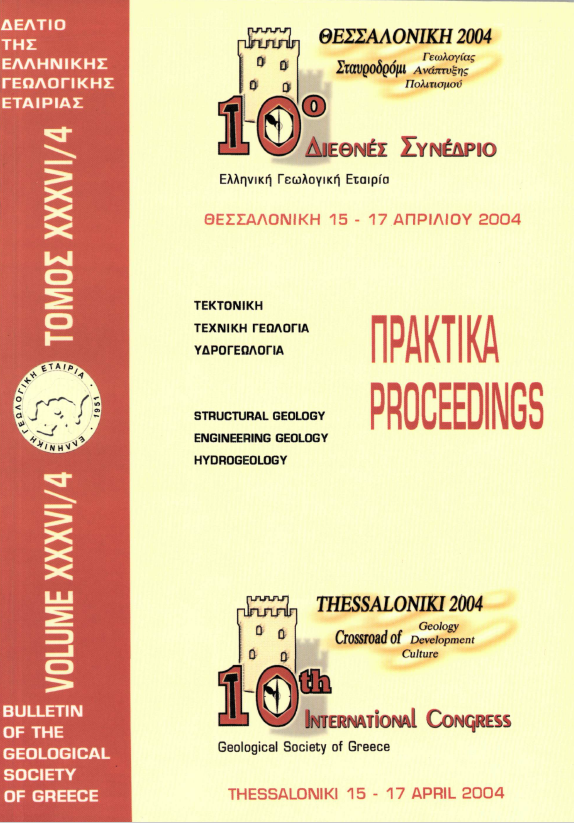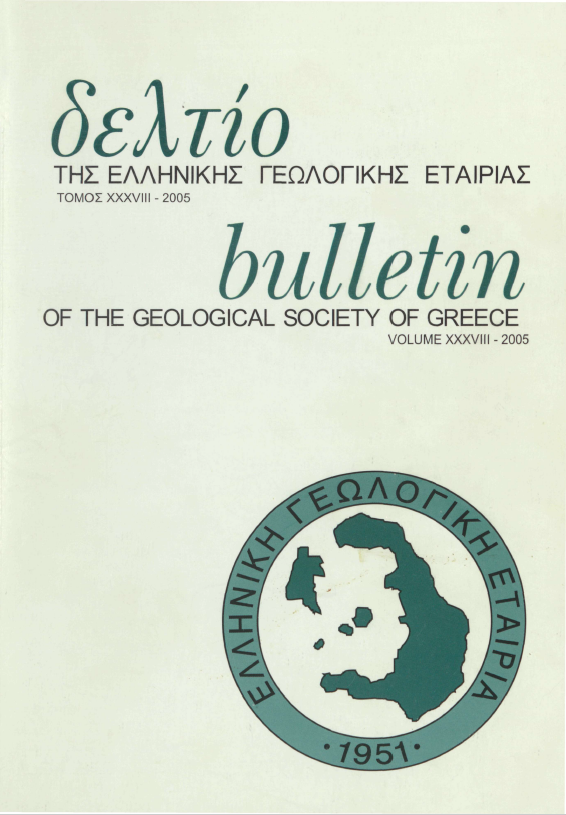PLEISTOCENE MARINE DEPOSITS OF THE AIGIALIA REGION (N. PELOPONNESUS)
Abstract
In Aigialia, and in the region of Aigion, after geological mapping, marine deposits of small extent and 3 to 60 m thick were found in altitudes by 30-820 m. These deposits are mainly composed of conglomeratic beds and sands and constitute remnants of marine terraces. In the marine deposits, fossils indicative of a coastal marine environment and age to Pleistocene, were found. The location and the altitude of the marine deposits have direct relation with the neotectonics of normal faults, the altitude of which exceeds 600 m. Based on the stratigraphy and the tectonics of the region, the age of the marine sediments is attributed to the Middle-Late Pleistocene.
Article Details
- How to Cite
-
Τρίκολας Κ., Κοσκερίδου Ε., Τσουρού Θ., Ντρίνια Χ., & Αλεξούλη-Λειβαδίτη Α. (2018). PLEISTOCENE MARINE DEPOSITS OF THE AIGIALIA REGION (N. PELOPONNESUS). Bulletin of the Geological Society of Greece, 36(2), 826–835. https://doi.org/10.12681/bgsg.16823
- Section
- Stratigraphy

This work is licensed under a Creative Commons Attribution-NonCommercial 4.0 International License.
Authors who publish with this journal agree to the following terms:
Authors retain copyright and grant the journal right of first publication with the work simultaneously licensed under a Creative Commons Attribution Non-Commercial License that allows others to share the work with an acknowledgement of the work's authorship and initial publication in this journal.
Authors are able to enter into separate, additional contractual arrangements for the non-exclusive distribution of the journal's published version of the work (e.g. post it to an institutional repository or publish it in a book), with an acknowledgement of its initial publication in this journal. Authors are permitted and encouraged to post their work online (preferably in institutional repositories or on their website) prior to and during the submission process, as it can lead to productive exchanges, as well as earlier and greater citation of published work.






